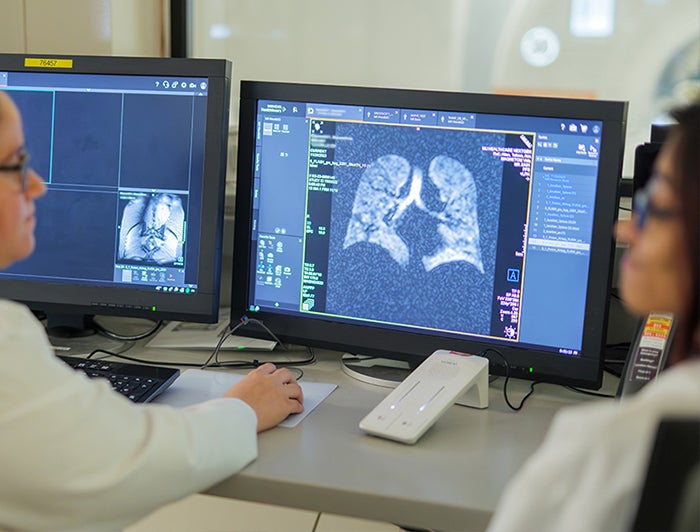
Recently, MU Health Care has become the second hospital in the U.S. to utilize xenon MRI technology for lung scans, promising a revolution in evaluating lung diseases such as cystic fibrosis, asthma, COPD, and cancer. Unlike traditional MRI diagnostics that focus on hydrogen atoms in body tissue, xenon MRI targets hyperpolarized xenon gas.
Patients inhale this non-reactive substance during the scan, which is then held in the lungs for a brief period of time, resulting in more accurate imaging of the lungs. The detailed 3D images produced by xenon MRI provide clinicians with a comprehensive view of the ventilated lung airspaces and can quantify lung microstructure and assess detailed aspects of lung function such as gas exchange.
Diagnosing lung diseases was often like solving a puzzle with missing pieces before the implementation of xenon MRI. However, this new technology fills those gaps by providing enhanced imaging that helps complete the puzzle of understanding and treating lung diseases effectively. Dr. Zach Holliday, a pulmonologist at MU Health Care emphasizes the significance of xenon MRI in helping diagnose and treat lung diseases more accurately than ever before.
The adoption of xenon MRI is part of MU Health Care’s NextGen Precision Health initiative aimed at collaborating with researchers from the University of Missouri and other universities within the UM System to advance precision health technologies for improved patient care. With this cutting-edge technology on board, patients can expect to receive even more personalized care and treatment options for their lung diseases than ever before.
In conclusion, xenon MRI is revolutionizing how we diagnose and treat lung diseases by providing more accurate imaging than ever before. With its ability to target hyperpolarized xenon gas instead of hydrogen atoms in body tissue like traditional MRIs do, it provides clinicians with a comprehensive view of ventilated lung airspaces that can be used to quantify microstructure and assess detailed aspects of lung function such as gas exchange.
By filling gaps in diagnosis that were previously present when using traditional MRIs alone, this technology allows us to understand and treat these complex diseases more effectively than ever before. As part of an ongoing commitment to innovation and precision healthcare delivery, we look forward to seeing how this technology will continue to evolve over time at MU Health Care.






